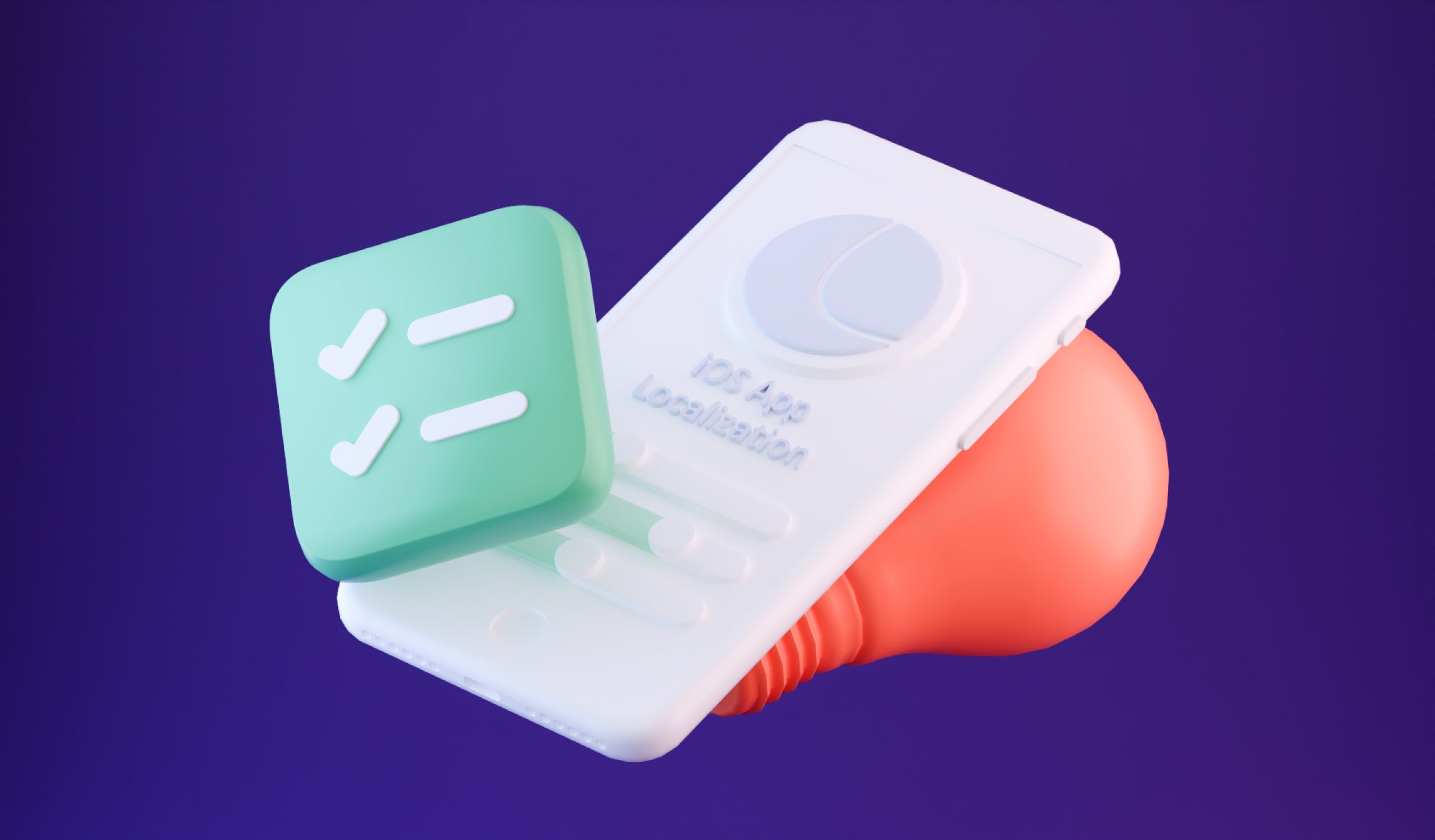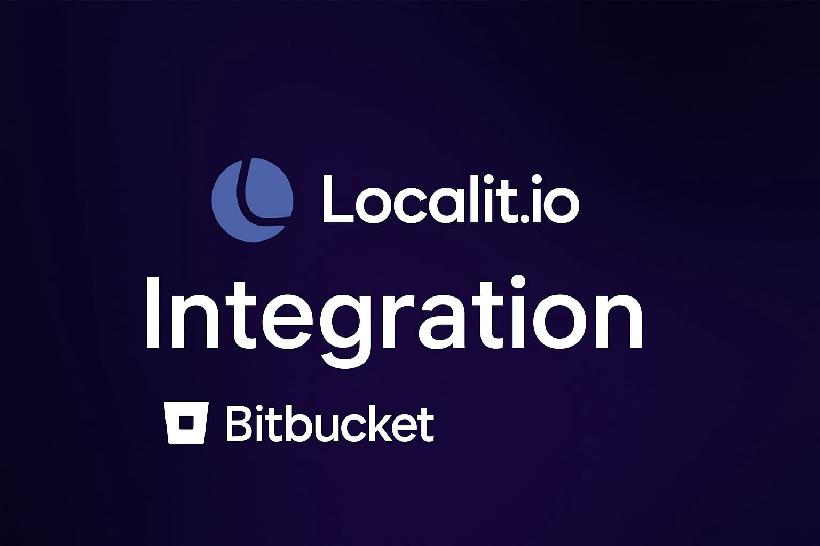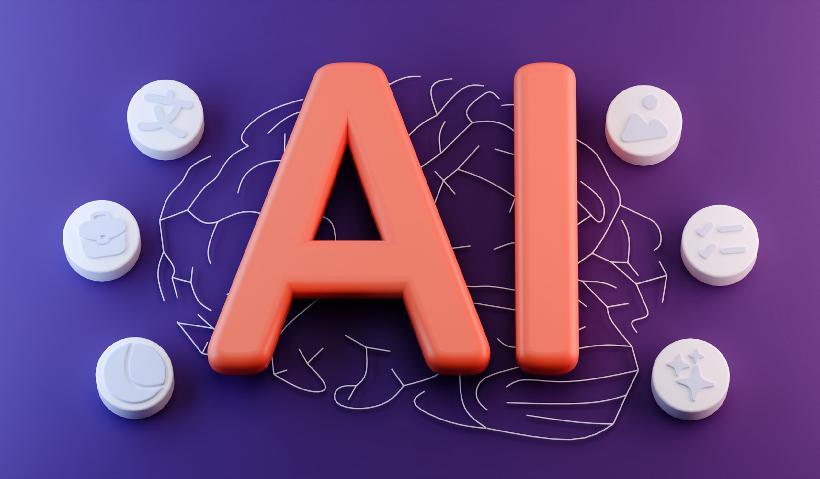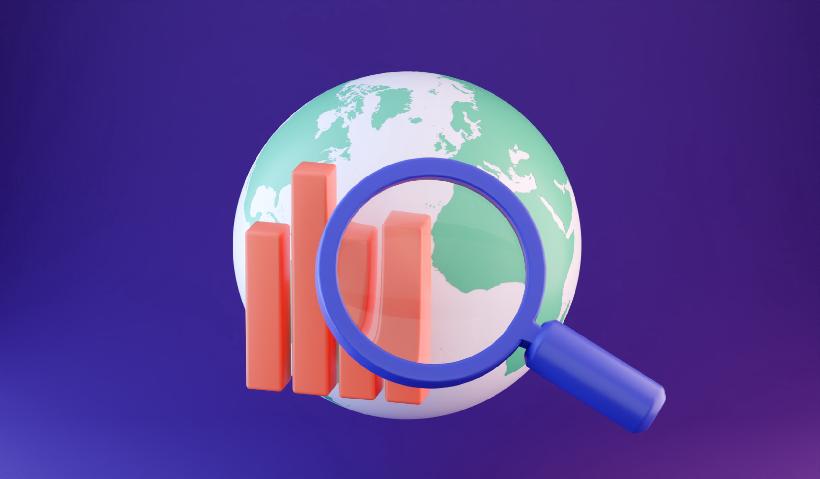We truly live in a world that is dominated by apps. There's an app for virtually anything these days. Food delivery? Uber Eats. Shopping? Amazon. Language learning? Duolingo. The list goes on and on. As of 2024, there were 1.54 million apps available to download on the App Store, while Google Play boasts an impressive number of 1.68 million. This reflects how important it is for businesses to offer a convenient and easy way for customers or clients to interact with their products and services.
So, naturally, when it comes to international expansion, companies think about extending their app reach to new audiences and markets. But it's not as easy as you may think. A mere translation of all texts and materials won't cut it: what's needed here is localization.
But what is it? How does localization benefit app popularity and company profits? What tips can be used to bulletproof a localization project? Stick around to find out in this handy mobile app localization guide.
What Is Mobile App Localization?
A localized app is like a dollar bill: everyone likes it, wherever you are in the world. But jokes aside, the process of localizing your app lies with adapting everything the app has to offer to fit the language, locale, customs, expectations, and regulation of a particular country or market. Every element of a given app is there for a specific reason and they all need to be customized for the best effect possible. Customers in Japan are not the same as in France or Brazil. Chinese users prefer bright colors and vivid images, while in Sweden calm and collected messages resonate better. The UK English is not the same as the US English. Hebrew and Arabic use right-to-left scripts unlike most of the world. All these little details must be taken into account in your localization efforts.
A localized app goes through two main stages of development to become a fresh out of the oven product that can be presented for public scrutiny. They are called internationalization and localization itself.
Internationalization
Software internationalization (abbreviated as i18n – 18 letters in total between "I" and "n") is the process of designing your application so it can easily adapt to various languages, regions, and cultural preferences. Think of it as laying the groundwork for future adaptations wherever they may be. In this stage, hard coding is replaced by specific "calls" that are activated once users click on their desired language button.
Looking to eliminate all possibilities of costly redesigns later on? Internationalization is your way forward then! Even if your initial release is only in one language, internationalizing your app ensures it's ready to support users from different countries down the road. This proactive approach:
Minimizes future localization challenges
Saves time and resources
Makes your app more accessible on the global market
Internationalizing an app means preparing it to accommodate different languages, formats, and user expectations seamlessly. It’s all about building a flexible foundation that allows for easy translation and regional customization later. For developers, this step is crucial in creating software that resonates with users across diverse markets. In the business context, you need to prioritize internationalization to streamline your workload and make your software oven-ready to be baked into Japanese, Brazilian, South African, or any other market.
Localization Itself
Once your app has gone through the internationalization stage, its internal structure is ready for a specific language to be applied to it. Localization process takes care of the following elements:
| Aspect | Examples |
|---|---|
| Text | User instructions, FAQs, terms & conditions, in-app messages, text within graphics, dynamic content |
| Media | Images, pictures, icons, graphics, videos, culturally-specific visuals (like local landmarks, symbols, colors) |
| Audio | Voice-overs, spoken instructions, background music, sound effects, audio prompts |
| Formatting | Currency symbols, date and time formats, number formatting, measurement units, time zones |
| Design/Layout | App layout adaptations for right-to-left (RTL) languages, typography adjustments, culturally relevant UI elements, iconography modifications |
| Legal/Policy | Local legal disclaimers, privacy policies, regional compliance information |
| Cultural Content | Local idioms, symbols, colors, cultural motifs, region-specific imagery, culturally appropriate content in multimedia elements |
Can I Just Translate and Not Localize?
Thousands of apps on the App Store and Google Play are available in multiple languages but not that many enjoy widespread popularity and attention. Why is that?
A simple translation is good enough when it comes to technical things or plain texts without any hidden meanings on a piece of paper. In other words, a mere translation order just won't cut it.
Localization bridges the gap between available and accessible. When the project is complete your app will be ready to be installed on Apple and Android devices across the world and users will not be spooked by clunky phrasings, awkward UI, dodgy app contents, and more. Having a trustworthy app constitutes half the deal when it comes to winning over clients online.
Getting this step right is paramount. Let's find out why.
Benefits of Localizing Your App
Localization is not easy. It requires a lot of attention, time, resources, and efforts. But it will be all worth it in the end. Users respond well to having services and products available in their native tongue. Studies show exactly how much localization matters:
40% of people will never buy from websites in other languages
65% prefer content in their own language, even if it’s not perfect
73% want product reviews written in their language
Numbers and stats don't lie.
Localization is a crucial part of any international expansion strategy and comes packed with rewards if done right. Here are a few reasons why you should localize and not be afraid of this challenge.
Personalized UX for Your Customers
Speaking the same language with an intended audience creates a level of trust and mutual understanding that is hard to reach otherwise. A 2016 study by Distomo found that companies localizing their iOS apps experienced a 128% increase in downloads, as users prefer apps in their native language.
Localizing an app’s store listing (including titles, descriptions, screenshots, and keywords) significantly boosts visibility and downloads, with keyword localization alone increasing downloads by up to 767%. Customizing content to better fit local cultures further enhances the user experience, leading to better engagement, conversion, and positive reviews.
More App Downloads
Downloads are the heartbeat of your app's success. Expanding your language reach to iOS and Android users all over the world in their native language improves app visibility, app engagement, and appeal. The combination of these factors will drive (you guessed it) the number of downloads upwards.
Increased Revenues
Higher revenues are what every business is after and the most logical benefit in this category. The more accessible you app is, the more likely customers are to spend money on it. In 2023, consumers spent $135 billion on mobile apps. Looking for a way to snatch a piece of this pie? Localize.
An efficient and localized app is essential to climb to the top of available mobile applications.
Types of Mobile App Localization
App localization can seem overwhelming, but you don't have to dive in headfirst. You can test the waters with a quick, focused approach before committing fully. Depending on your goals and resources, there are two paths you can take:
Minimum Viable Localization (MVL)
Start small. MVL focuses on the essentials: keywords, descriptions, pricing, payment options, metadata, and more. It's a lean, cost-effective way to see if your app can connect with a new audience.
Full App Localization
Once MVL shows promise, it's time to go all in. Full localization means rethinking your app for a new market. Translate every element, refine the user experience, and tailor your marketing to fit local tastes. It's a complete makeover to truly make your app feel at home anywhere in the world.
Common App Localization Challenges
Cultural and Linguistic Nuances
App localization often stumbles over language and culture differences. A term that works in one language might sound odd or even offensive in another. For instance, IKEA made quite a lasting (not in a good way) impression when it introduced their Fartfull desk to English-speaking markets. It goes without saying that it's best to avoid such conundrums.
Some companies opt for local linguists instead of relying on automated translations
Others create glossaries and style guides to keep messaging consistent
Businesses such as Spotify and Duolingo have refined their language choices by investing in local experts, ensuring that their tone fits the audience's everyday speech.
When handling translations, avoid literal word-for-word changes. Focus on creating a message that feels natural to each audience. Adjust humor, slang, and technical terms as needed. This step can prevent potential misunderstandings and boost user engagement.
Technical Integration and App UI Challenges
Adapting the user interface for different languages can cause unexpected problems. Imagine forgetting that Arabic reads right to left? This will not only spoil designs but also frustrate users who will be utterly confused.
Fixing layout issues often involves revising the entire screen design
Some teams use flexible frameworks to accommodate variable text lengths
Changing fonts and icons to match local tastes is also a factor. A small tweak in spacing or alignment can make a big difference in how the app feels to users. Testing on a variety of devices and screen sizes is key to catching these hiccups early.
Examples from leading businesses show that cross-department teamwork is essential. Developers, designers, and translators must work closely to ensure the final product is smooth and visually appealing. Iterative testing and user feedback make all the difference in fixing these technical issues.
Ongoing Updates and Content Consistency
Keeping localized content current is a challenge in itself. Apps evolve with new features and bug fixes, and updating translations along with these changes can be tricky. In 2016, Nintendo made a mistake by not using the traditional Pokémon names for Hong Kong and Taiwan. Fans in these regions were disappointed, feeling that their preferences were overlooked.
Some teams use automated tools that sync updates with translations
Others schedule regular content reviews with local teams to catch any issues early
The process of aligning new features with localized content requires strong coordination between teams. Each new update must pass through a quality check in every language version, a step that can slow down release cycles if not managed well.
Coming up with a Comprehensive App Localization Strategy
Any successful project starts with a clear plan. Localization is not an exception. In order to succeed, you need to plan, make provisions, allocate the necessary resources, and preempt any potential issues in the localized app development process.
Set Objectives: Define your goals for localization, such as boosting downloads, improving engagement, and increasing revenue.
Conduct Market Research: Investigate your target markets, explore local languages, cultural nuances, and study competitor strategies.
Plan the Strategy: Outline a clear timeline and budget, and decide whether to start with a minimum viable localization (MVL) or go full-scale.
Assemble the Team: Gather native speakers, translators, developers, and designers to work together effectively.
Prepare the App for Localization: Extract all translatable content and integrate localization tools to streamline the process.
Translate and Adapt Content: Convert text and visuals to local languages while considering cultural context and regional preferences.
Test and Refine: Run both linguistic and functionality localization testing across various devices, and gather feedback from local beta testers.
Launch and Monitor: Strategically roll out localized versions and track key performance metrics and user reviews.
Iterate Based on Feedback: Regularly update and refine content and features to maintain app relevance and improve user satisfaction.
Essential App Localization Tips
However, a strategy alone is not enough to be successful. To save you time and prevent avoidable mistakes, use these tips for app localization.
Design with more space in mind
Languages around the world have different word lengths. English needs more space than Chinese but less than German. Keeping this in mind will save your app from unnecessary redesigns.
Locales are more important than languages
Did you know that Portuguese in Portugal and Brazil are not the same? Despite being called the same, these varieties have some key differences that will stick out like a sore thumb if used in the wrong place. Use specific locale codes like pt_PT and pt_BR to avoid the confusion.
Keep a glossary
Your brand communicates a specific message. Nike's slogan is "Just Do It" but imagine it was incorrectly translated as "Go Make That" on their website and app? The message will be diluted and fail to resonate. Avoid this by creating a glossary of key terms and phrases for uniformity.
Use a localization software
Juggling all aspects of localization alone with your team is tiring. But you don't need to go this path alone. Seek out a modern convenient localization provider, like Localit, to streamline and automate your workflow.
Localit Can Help You Localization Efforts
Localizing your content and services doesn't have to be a marathon. Instead of manually translating into different languages use modern technology to boost your efficiency. With a ton of materials spread across your website, app, and marketing channels, you need a tool that helps your app shine on the App Store and Google Play.
Translation Management Systems (TMS) streamline the entire process, cutting down delays and saving you time and money. Platforms like Localit use advanced automation and machine translation to turn localization into an exciting endeavor rather than a tedious chore. When your content speaks the language of your users, your app's visibility and popularity soar.
Benefits of partnering with Localit for your business:
Localit Is Fast: With processing speeds of up to 200 ms, your content is downloaded and processed faster than you can make a cup of coffee.
Localit Is Pro Communication: An integrated chat with support for voice notes, screenshots, and other media means you won't have to juggle multiple messaging platforms.
Localit Uses AI: Whether you prefer ChatGPT, Google Translate, or DeepL, Localit lets you pick the best machine translation tool for your project.
Localit Is Truly Multilingual: With support for 111 languages, Localit ensures your app resonates with users from Chinese to Arabic, French, and beyond.
Localit Is Affordable: With convenient packages and offers, you can achieve outstanding localization without breaking the bank.
Ready to see your app climb the charts on the App Store and Google Play? Head over to Localit's website to get your free trial and test its features today!
Dare to Localize Your Mobile App
Ready to take your iOS and android app to the next level? This guide to app localization shows you how a solid localization team and smart strategies can increase app downloads and user satisfaction. App developers and marketers, don’t wait for your next app release to catch up. Dare to localize your mobile app now and watch your efforts pay off!

 Bitbucket Integration: Complete Guide to Automated Localization Workflow
Bitbucket Integration: Complete Guide to Automated Localization Workflow ChatGPT-5 Now Available in Localit.io
ChatGPT-5 Now Available in Localit.io Everything You Need to Know about Mobile App Localization: Challenges + Best Practices of Working in a Different Language
Everything You Need to Know about Mobile App Localization: Challenges + Best Practices of Working in a Different Language